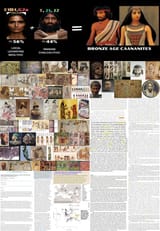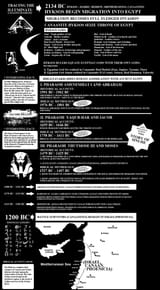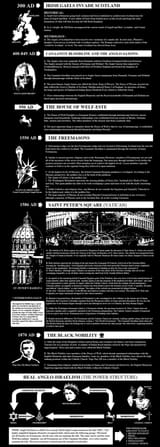Anonymous
ID: mFPJs5t1
6/25/2025, 8:50:01 PM No.508713807
They look like a mix of Natufians + Anatolian Neolithic Farmers + Caucasian Hunter-Gatherers/Neolithic Iranians.
>Canaanite culture developed in situ from multiple waves of migration merging with the earlier Circum-Arabian Nomadic Pastoral Complex, which in turn developed from a fusion of their ancestral Natufian and Harifian cultures with Pre-Pottery Neolithic B (PPNB) farming cultures, practicing animal domestication, during the 6200 BC climatic crisis which led to the Neolithic Revolution/First Agricultural Revolution in the Levant. The majority of Canaan is covered by the Eastern Mediterranean conifer–sclerophyllous–broadleaf forests ecoregion
>A 2017 study of five Canaanite skeletons found that approximately half of the skeletons' genes originated from agricultural settlers in the Levant around 10,000 years ago. The other half was from a population tied to Iran, which researchers estimate arrived in the Levant approximately 5,000 years ago
>Hajjej (2018) revealed that when using HLA genes, Levantine Arabs, such as Palestinians, Syrians, Lebanese and Jordanians, were closely related populations with common Canaanite ancestry. They shared a common geographic territory, which was later disrupted by 19th-century British and French colonization. Their Canaanite ancestors came from North Africa or the Arabian peninsula via Egypt in 3300 BC and settled in the Levant lowlands after the Ghassulian collapse in 3800-3350 BC. The Levantine Arabs were also related to East Mediterranean populations, such as Turks, Greeks and Cretans, Egyptians and Iranians, which can be explained by the high migratory flow between Levantine sub-regions. However, Levantine Arabs were genetically distant from Arabian Peninsula populations such as Saudis, Kuwaitis and Yeminis before the 7th century Islamic conquests
>Canaanite culture developed in situ from multiple waves of migration merging with the earlier Circum-Arabian Nomadic Pastoral Complex, which in turn developed from a fusion of their ancestral Natufian and Harifian cultures with Pre-Pottery Neolithic B (PPNB) farming cultures, practicing animal domestication, during the 6200 BC climatic crisis which led to the Neolithic Revolution/First Agricultural Revolution in the Levant. The majority of Canaan is covered by the Eastern Mediterranean conifer–sclerophyllous–broadleaf forests ecoregion
>A 2017 study of five Canaanite skeletons found that approximately half of the skeletons' genes originated from agricultural settlers in the Levant around 10,000 years ago. The other half was from a population tied to Iran, which researchers estimate arrived in the Levant approximately 5,000 years ago
>Hajjej (2018) revealed that when using HLA genes, Levantine Arabs, such as Palestinians, Syrians, Lebanese and Jordanians, were closely related populations with common Canaanite ancestry. They shared a common geographic territory, which was later disrupted by 19th-century British and French colonization. Their Canaanite ancestors came from North Africa or the Arabian peninsula via Egypt in 3300 BC and settled in the Levant lowlands after the Ghassulian collapse in 3800-3350 BC. The Levantine Arabs were also related to East Mediterranean populations, such as Turks, Greeks and Cretans, Egyptians and Iranians, which can be explained by the high migratory flow between Levantine sub-regions. However, Levantine Arabs were genetically distant from Arabian Peninsula populations such as Saudis, Kuwaitis and Yeminis before the 7th century Islamic conquests




